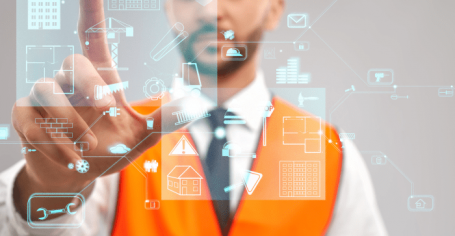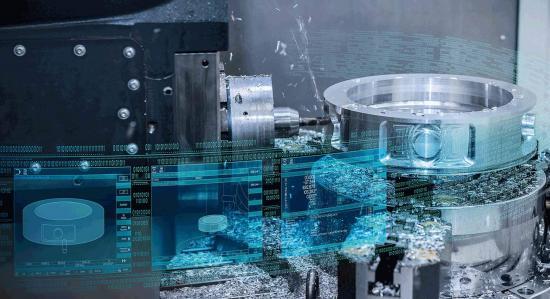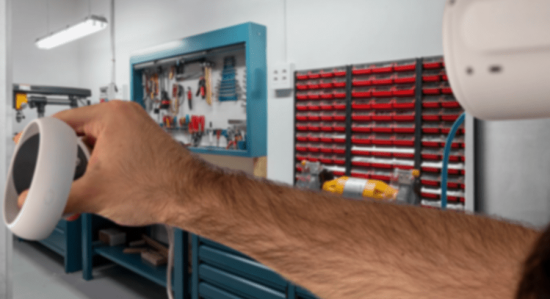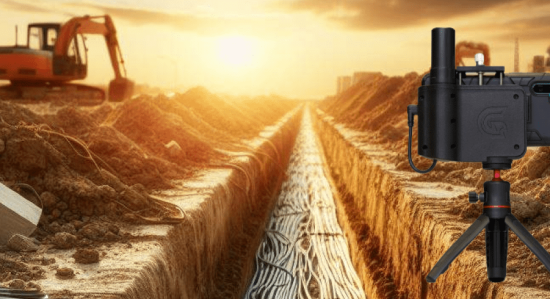
What Are Augmented Reality Work Instructions?
It’s a digital work instruction that extends the real world with 3D models, images, and text files and puts them in the context of existing surroundings using the capabilities of Augmented Reality. AR work instructions eliminate the need for paper guidance, access relevant information quickly, and improve workflow.
Benefits of AR Work Instructions
How Augmented Reality projected work instructions bring value
Visualization
Augmented Reality work instructions enable you to use 3D models, holographs, and digital twins to explain complex subjects in a more comprehensible and engaging way. Instead of looking at 2D pictures and reading tons of texts, workers can explore 3D models from all angles to understand the working process better.
Enhanced learning
By allowing workers to interact with AR work instructions, you give them an active role, contributing to a better understanding and perception of the information in context. Active participation also decreases training time and boosts knowledge retention. AR work instructions also enhance safety training, reducing the risk of incurring injury or damaging equipment during work procedures.
In-situation assistance
With projected work instructions, employees can quickly get relevant information about a particular situation — for example, if a malfunction occurs while operating equipment. Workers get a step-by-step guide applicable in practice, so they don’t have to involve a more experienced colleague. That saves time and improves work efficiency.
Adjusting to context
As AR extends the real environment with relevant documents and images, instructions become clearer and easier to follow in practice. Using wearable AR devices such as goggles, workers can keep both hands free during assembly procedures and not be distracted by other devices or paper manuals, as assembly instructions are displayed right in front of them. It reduces the likelihood of errors and facilitates workflow.
Streamlined knowledge transfer
Transferring expert knowledge to new team members or those gaining new skills becomes more efficient using AR. For one thing, AR work instructions can be easily created, shared, or updated, which saves time and costs compared with paper manuals. Secondly, video and voice-guided step-by-step instructions eliminate the need for constant supervision and assistance by more experienced colleagues.
AR-enabled quality inspections
In addition to guiding employees who create products, AR offers instructions and tools to those responsible for quality control and allows for integrating advanced inspection methods to find defects and quality issues. Using CAD (Computer Aided Design) models to compare a component to a plan, any inconsistencies can be quickly identified and documented. This makes for cost-effective inspections and improved product quality.
Industries Leveraging AR Visual Work Instructions
Learn how to tailor Augmented Reality work instructions for your industry
Manufacturing
Augmented Reality technology can enhance almost all manufacturing processes. Workers can learn how to operate equipment through interactive instructions and get visual guidance in context to put them into practice and improve assembly procedures. AR even enhances remote collaboration.
Life Science and Pharma
In pharma and life science manufacturing, workers deal with chemicals and drugs of multiple levels of hazard. To ensure safety in the workplace, employees must follow strict guidelines that may vary by manufactured medication. Augmented Reality work instructions help eliminate the confusion of multiple guidelines and avoid costly mistakes by providing necessary information in real time.
Construction
Presenting project requirements in the form of AR documentation and virtual models simplifies project design. And overlaying instructions on the job site helps workers improve construction accuracy and efficiency. AR instructions also enhance training methods, allowing builders to learn how to work with new equipment.
Utilities
Using wearable AR devices, technicians get the opportunity to scan systems and receive and manage instructions hands-free, increasing worker safety, especially in hazardous environments such as heights. Another benefit of such instructions is the possibility to collaborate with others to get support or operator guidance.
Telecommunication
AR improves field service management by allowing technicians to quickly scan systems, find out what needs to be repaired, and receive relevant visual work instructions. The technology also speeds up equipment maintenance activities by providing easy access to maintenance history and intuitive work instructions.
Automotive
The high variability in the components used in manual work and the different approaches to performing it can lead to confusion and errors. To avoid mixups, AR can provide guided work instructions to standardize manual procedures, ensure every worker receives the same information, and provide an intuitive assembly process.
AR Visual Work Instructions in Figures
The effectiveness of instructions using Augmented Reality has been confirmed in both studies and the hands-on experience of companies from multiple industries. This is what some research and successful examples reveal:
- AR instructions reduce quality issues by about half compared to paper manuals
- introduction of holographic models and videos in training increases workers’ attention by 35%
- combining digital and paper guidelines is less effective than using only digital instructions
- after implementing AR instructions for electrical wiring installation, Boeing increased its process productivity by 40%
3D Work Instructions: Cost Factors to Consider
The cost of projected work instructions is tough to estimate without knowing the details
Main costs
These are costs associated with core functionality and project requirements. The more complex the required solution, the higher the development cost.
- type of AR solution;
- scope of work;
- technologies and platforms;
- 3D modeling and visual content creation.
Organizational costs
This group includes costs related to establishing and working with the development team, especially when cooperating with outsourcing vendors.
- team size and expertise;
- developer’s location;
- developer’s location;
- cooperation model.
Additional costs
Other expenses are optional and depend on business needs and industry requirements, so your project may not include them.
- hardware;
- third-party integrations;
- compliance with industry or regional regulations.
How to Create AR Manuals with HQSoftware
Steps we follow to engineer top-notch solutions
AR consulting
to outline a business idea and define project requirements
Handling visual elements
to create realistic and high-quality 3D models and 2D images
AR solution development
using image tracking and object recognition technologies
AR app testing
to ensure bug-free performance and smooth visuals
Types of AR Solutions We Develop
Choose the type of app that meet your goals the most
Markerless
This type of AR app doesn’t use object-tracking systems and has no need to scan the environment as it is not attached to particular triggers. An AR experience can be displayed on any flat surface through a camera.
Marker-based
An app uses static images cameras can easily recognize, e.g. a QR code, as a trigger to start an experience. The positioning of AR objects is attached to a marker and independent of the environment around them.
Location-based
The display of an AR experience is related to the user’s location, as determined by the device’s accelerometer, compass, and GPS. As soon as an app understands the user is focusing the device on a point of interest, the experience starts; it doesn’t rely on a flat surface.
Augmented Reality Work Instructions: Why HQSoftware?
Challenges we can solve as your AR development partner
-
Quality visual assets
As image resolution and smooth overlay of virtual objects affect the user experience and effectiveness of interactive work instructions, we emphasize the creation of high-quality visual content. Our specialists have in-depth expertise in solving challenges related to occlusion and sense & object recognition, ensuring a seamless merging of virtual elements with real surroundings.
-
Vast technological capabilities
In addition to Augmented Reality, your solution can include other top-notch technologies, such as voice recognition, Artificial Intelligence, IoT, etc., to meet all your business needs. We work with a variety of hardware and ensure the application’s bug-free performance on any platform.
-
Quick start
It takes us from 2 weeks to a month to build an AR development team, depending on its size and required expertise. Since we adhere to a proven implementation plan and have strong team management, we ensure predictable time to market.
-
Rich industry experience
One of the primary focuses of our work is AR development for companies of all sizes, from startups to enterprises. For more than 21 years, we have been delivering many solutions in this field and have been acknowledged by Inc. 5000, Clutch, and GoodFirms as reliable and trusted partners.
Customer Stories
450 business goals reached through tech solutions since 2001
Partnerships Beyond Business
We work with people, not logos
FAQ With AR Developers
What is the effectiveness of interactive work instructions compared with traditional ones?
Which companies are already using AR for work instructions?
What devices are required to implement AR-enabled work instructions?
We are open to seeing your business needs and determining the best solution. Complete this form, and receive a free personalized proposal from your dedicated manager.

Sergei Vardomatski
Founder






